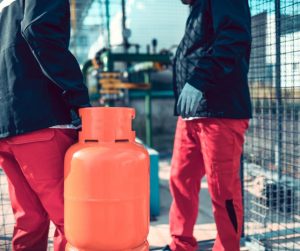Storage Safety Guidelines
Cylinders should be stored in the open air, preferably, on a concrete or load-bearing surface. Sturdy, purpose-built stands or racks should be used to keep them upright and prevent toppling. Secure them with chains or straps for added stability. Fresh air disperses leaks and prevents dangerous gas build-up.
Flammable liquids, combustible, corrosive, oxidising materials, toxic materials or compressed gas cylinders should be kept away from LPG containers in general. Different gases have different temperaments. Always maintain safe distances between cylinders and other materials, as per local regulations.
Containers should be stored with their valves uppermost.
Resist the urge to stack cylinders like building blocks. This increases the risk of toppling and valve damage, often contributing to leaks and even explosions. Ensure that the maximum size of any stack does not exceed local guidelines.
For indoor storage, there are specific weight guidelines regarding storage of cylinders in each purpose designed building compartment. Ensure you comply with local limits. Basements and garages are absolute no-go zones due to potential gas accumulation.
Keep cylinders away from direct sunlight and ignition sources such as naked flames or smoking. Temperatures of over 50°C can compromise cylinder integrity and increase pressure, posing safety risks.
Safety First, Always
Schedule periodic visual inspections of cylinders. Look for rust, leaks, or valve damage. If any of these are spotted, stop using the cylinder immediately and contact the supplier or a qualified gas engineer.
Clearly mark the storage area with signage indicating the type of gas stored, contact information and emergency procedures. Knowledge is power.
Train employees on safe gas handling practices, cylinder identification, and the emergency procedures.









